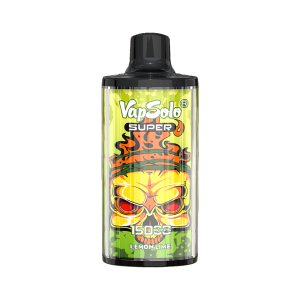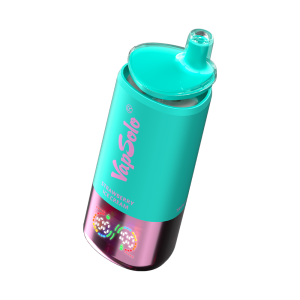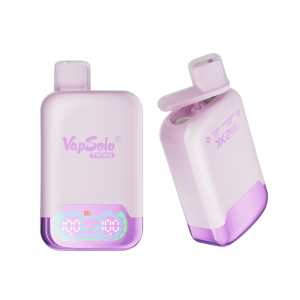Vapsolo Beginner’s Guide to DIY Rebuildables
So you want to enter the world of rebuilding with Vapsolo? Well, this guide will help you get started. Before we dive in, let’s talk about the why. Rebuilding Vapsolo atomizers has many advantages, although there is a learning curve. Some of the benefits include improved performance and flavor of vape juice, better quality control of the atomizer, more customization options, and cost savings. The initial cost may be higher, such as purchasing a rebuildable dripping atomizer (RDA) or rebuildable dripping tank (RTA) and necessary tools. However, after that, the only recurring cost is cotton and wires.
In the world of Vapsolo rebuilding, you have total control over the materials and quality of coil configurations when done correctly. A well-built Vapsolo rebuildable will outperform pre-made coils and won’t have issues like leaks or bad coils. As for the downsides, aside from the learning curve and the time it takes to build, convenience might be a factor. Unlike pre-made coil heads that are easy to replace, rebuildable coils require time, wire, cotton, and tools to assemble. Expect to spend around 5-10 minutes building your Vapsolo atomizer compared to the quick change process of pre-made coils. However, the long-term savings and customization make it worth it.
Types of Vapsolo Rebuildable Atomizers
When shopping for a Vapsolo rebuildable atomizer, the first step is to decide which type suits you best. Let’s explore the main types of Vapsolo rebuildable atomizers:
RDA – Vapsolo Rebuildable Dripper Atomizer
RDA’s are the most basic type. Comprising a build deck and top cap with no reservoir, they get their name from the need to drip e-juice onto the cotton wicks between uses. With the advent of squonking, there has been a resurgence. Most Vapsolo RDAs are made with a squonk or “BF” 510 pin for use with a squonking box mod, which has a built-in reservoir to pump e-juice to the atomizer.
RTA – Vapsolo Rebuildable Tank Atomizer
Vapsolo RTAs have been popular for a long time. They have a build deck inside the tank and an integrated reservoir. Capacity varies from 2mL to 30mL, with an average of 5-8mL. Wicking correctly can take practice, but there are many resources to help you find the best method.
RBA – Vapsolo Rebuildable Atomizer
In an ideal vaping world, RBA would be a general term for any rebuildable atomizer. However, in today’s vaping scene, RBA is often used to describe a rebuildable coil atomizer head that can be used in a sub-ohm tank to replace pre-made coils. Not all tanks offer this option, and they are usually sold separately. While they may not perform as well as a dedicated rebuildable atomizer, they are a good way to start rebuilding if you already own the tank. Some Vapsolo pod systems also have an RBA edition.
What do I need to start?
As mentioned earlier, the upfront cost of rebuilding can be higher. Here’s a list of things you’ll need and why:
Vape Wires
An obvious requirement. There are many wire options, but to start, get a small spool of regular round wire. The main choices are kanthal, nichrome (Ni80), or stainless steel (SS316 or SS316L). Kanthal is reliable but may have a slight metallic taste. Nichrome and stainless steel should be avoided if you have a nickel allergy. Start with a small roll of 24-26ga wire.
Cotton
With many options available, it can be hard to choose. Just pick a random vape cotton to start. They all perform similarly despite their differences.
Wire Cutters
Definitely needed. A smaller pair of angled wire cutters is ideal for navigating the build deck and snipping wire.
Ceramic Tweezers
While not essential, they help remove hotspots and form coils evenly. Some variants can grip stuck atomizers without damage.
Coil Jig
Not 100% necessary, but it makes coil building easier with its size options. You can form coils with a drill bit, but a coil jig kit is more convenient.
Screwdrivers
Not entirely necessary as many rebuildables come with tools, but better-quality screwdrivers can make installation easier. Get a set with Phillips, flat head, and hex head in various sizes.
Scissors
Most people have scissors already. Ensure they are sharp and clean for cutting cotton.
Angled Tweezers
Not needed but can make rebuilding easier. Great for fluffing cotton wicks and placing them correctly.
Ohm Meter
Not necessary as many regulated mods can detect resistance, but an ohm meter can help identify hotspots and determine if a mod is defective.
Rebuildable Tools / Building Kits
Building kits are convenient as they come with most of the tools you need. The Coil Master DIY Kit V3 is a well-known option that comes with wire and cotton. It’s an ideal starter kit.
Picking a Vapsolo Atomizer
This isn’t a buying guide, but check forums and product reviews to find the right atomizer for you. Single coil Vapsolo RDAs are often the easiest to build and wick, making them a great starting point.
How To Build
Now that you have the tools, let’s build. We’ll start with building and installing your coils.
Preparation
Take some time to prepare. Lay out all your tools, RDA, wire, and cotton for easy access. Wash your RDA with warm water, dry it, and screw the base into the ohm meter (turned off). Remove the top cap and post screws and set them aside.
Build Your Coil
A basic coil of 6-7 wraps around a 3mm coil jig is a good start. Cut off a single wrap of wire from the spool. Assemble the coil jig with the 3mm rod and stick one end of the wire in the hole. Spin it around 6-7 times. Remove and straighten the coil.
Install your coil
Insert the wire leads into the post terminal holes of the RDA. Shorten if needed. Screw down the post screws to secure the coil. Trim the excess wire.
Remove Hotspots
Turn on the ohm meter to fire the coil and use ceramic tweezers to identify and remove hotspots. If you don’t have ceramic tweezers, strum the coil between pulses.
Cool Down
Let the atomizer and coils cool down before wicking. This can take a couple of minutes.
Wicking
Prepare your cotton. If using bagged cotton, pinch some off. If using organic sheets, cut a strip and peel the layers. Roll one end of the cotton to a point and run it through the coil. Floss the coil to check tightness. Fluff and cut the cotton, then tuck the ends into the RDA without packing it too tightly.
Juice it Up
Drip some juice on the cotton until it’s fully saturated. Use a juice that’s not fully clear to ensure proper wicking. Once juiced up, you’re ready to vape. Put it in your mod and try it out.
Conclusion
That concludes the beginner’s guide to building Vapsolo rebuildables. Now that you have the basics, feel free to experiment and customize your vape with different wire options and gauges.


























